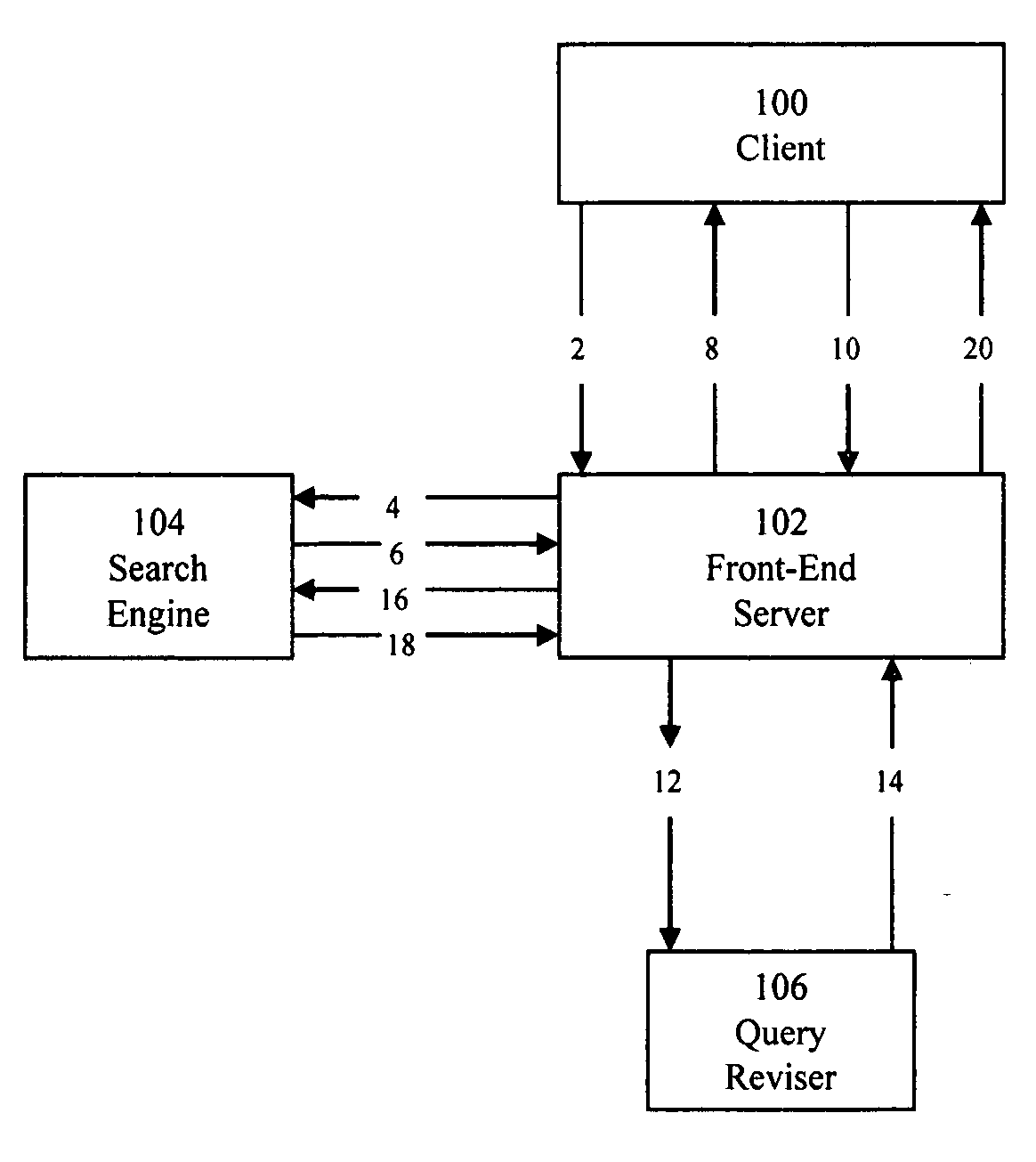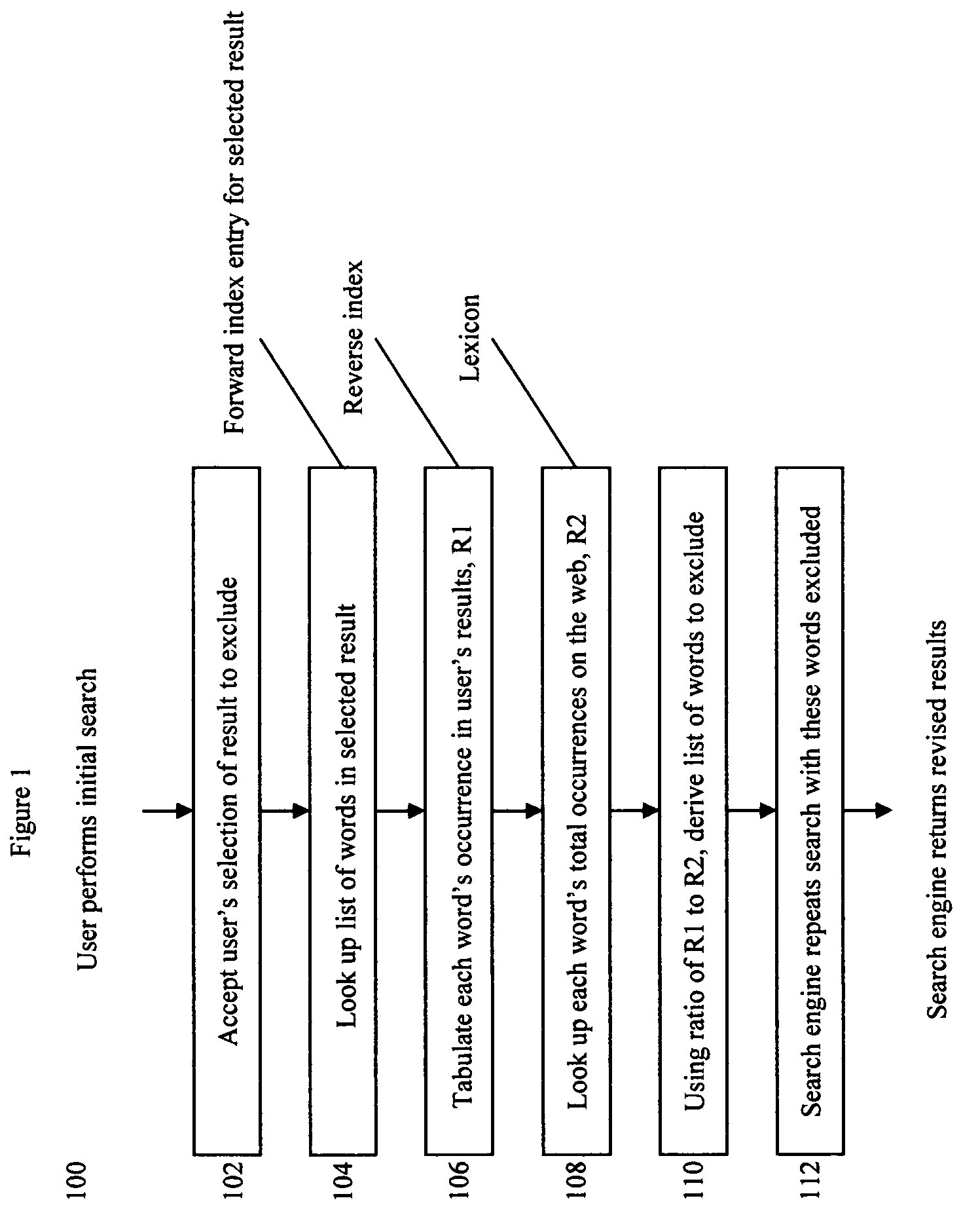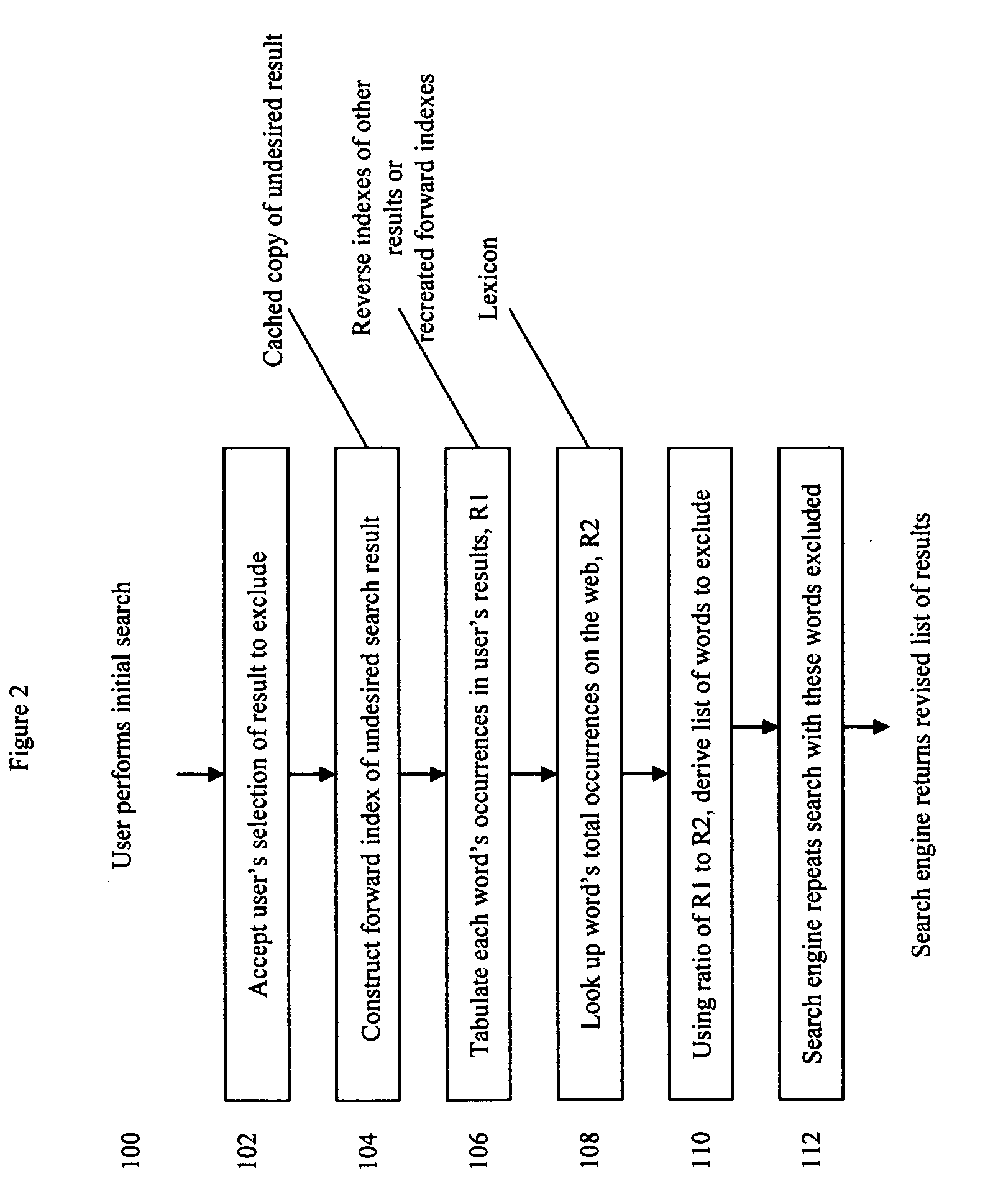Method For One-Click Exclusion Of Undesired Search Engine Query Results Without Clustering Analysis
a search engine and clustering technology, applied in the field of refinement of search engine results, can solve problems such as undesirable in the value judgment of a particular user
- Summary
- Abstract
- Description
- Claims
- Application Information
AI Technical Summary
Benefits of technology
Problems solved by technology
Method used
Image
Examples
Embodiment Construction
[0018]The present invention will be described in reference to embodiments that automatically identify and exclude potentially undesirable Internet search engine query results. However, embodiments of the invention are not limited to any particular environment, application, or specific implementation. Therefore, the description of the embodiments that follows is for purposes of illustration and not limitation.
[0019]Search engines typically traverse the World Wide Web and construct numerical indexes reflecting the contents of the webpages they encounter. In order to deliver results promptly, this process involves the compilation and storage of several different types of lists or databases.
[0020]First, it is necessary for the search engine to generate an index of the words present in each particular webpage, which may be referred to as the “forward” index. This process typically also involves certain additional operations such as the removal of “stopwords” (words such as “the” which ar...
PUM
 Login to View More
Login to View More Abstract
Description
Claims
Application Information
 Login to View More
Login to View More - R&D
- Intellectual Property
- Life Sciences
- Materials
- Tech Scout
- Unparalleled Data Quality
- Higher Quality Content
- 60% Fewer Hallucinations
Browse by: Latest US Patents, China's latest patents, Technical Efficacy Thesaurus, Application Domain, Technology Topic, Popular Technical Reports.
© 2025 PatSnap. All rights reserved.Legal|Privacy policy|Modern Slavery Act Transparency Statement|Sitemap|About US| Contact US: help@patsnap.com



